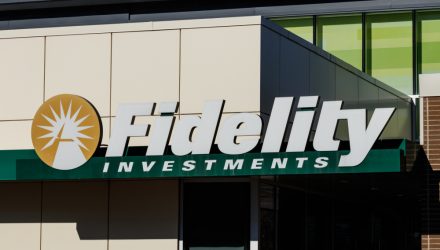Fidelity Investments today introduced its first suite of active equity ETFs, that unlike traditional ETFs, won’t tell the public what assets they hold each day.
The three new ETFs are available commission-free to individual investors and financial advisors through Fidelity’s online brokerage platforms. The active equity ETFs are competitively priced with total expense ratios of 0.59% each and will utilize the same portfolio managers and research teams as their like-named mutual funds.
“With our new active equity ETFs, we are continuing to innovate and offer unmatched overall value to our clients,” said Greg Friedman, Fidelity’s Head of ETF Management and Strategy. “Our active equity ETFs harness the power of Fidelity’s 74-year legacy of active management delivered with the tax efficiency, trading flexibility and potential cost efficiency benefits ETF vehicles offer.”
Friedman told ETF Trends the Fidelity approach uses a proxy basket methodology, allowing for seamless implementation that uses existing infrastructure and requires very little operational build-out, adding the methodology helps to protect the firm’s insights and research while providing sufficient information to efficiently affect a trade.
“Even though the first three funds are large cap, there are still backed by our firm’s insights and trading strategies,” he told ETF Trends. “We believe that it is in the best interest of all shareholders to use this new proxy basket methodology, which is designed to protect shareholders from the potential negative effects of daily portfolio transparency. These new funds will be using a similar fundamental philosophy to that of the like-named mutual fund, and therefore trade in a similar fashion, and follow the same disclosure policy as our mutual funds.”
Fidelity’s active equity ETFs will employ an innovative tracking basket methodology, which maintains the benefits of the ETF structure, provides information to market participants to promote efficient trading of shares, and preserves the ability to add value through active management.
The active equity ETFs began trading today on the CBOE BZX Exchange, Inc. Each ETF will have an investment objective to seek long-term growth of capital.
Fidelity’s New Active Equity ETFs: Principal Investment Strategies
- Fidelity Blue Chip Growth ETF (FBCG) [1] will normally invest primarily in equity securities of companies that the Adviser believes have above-average growth potential (stocks of these companies are often called “growth” stocks). The Adviser normally invests at least 80% of the fund’s assets in blue chip companies (companies that, in FMR’s view, are well-known, well-established and well-capitalized), which generally have large or medium market capitalizations.
- Fidelity Blue Chip Value ETF (FBCV) [1] will normally invest primarily in equity securities of companies that the Adviser believes are undervalued in the marketplace in relation to factors such as assets, sales, earnings, growth potential, or cash flow, or in relation to securities of other companies in the same industry (stocks of these companies are often called “value” stocks). The Adviser normally invests at least 80% of the fund’s assets in blue chip companies (companies that, in FMR’s view, are well-known, well-established and well-capitalized), which generally have large or medium market capitalizations.
- Fidelity New Millennium ETF (FMIL) [1] will normally invest primarily in equity securities that are either “growth” stocks or “value” stocks, or a combination of both types. The Adviser will seek to identify early signs of long-term changes in the marketplace and to focus on those companies that may benefit from opportunities created by these changes and will favor companies that show potential for stronger-than-expected earnings or growth and industries that are undervalued or out-of-favor. The fund’s strategy can lead to investments in small and medium-sized companies.
Friedman said would he would describe Fidelity’s initial active equity ETF strategies as “opportunistic.”
“The portfolio manager seeks to invest across all sectors, market capitalizations and styles to find opportunities where our earnings forecasts deviate from consensus,” he said. “We believe in investor choice and this provides coverage across market caps and styles. We have seen market rotations throughout history and want to give our clients access to a variety of strategies that meet their investment needs.”
[1] These ETFs are different from traditional ETFs.
Traditional ETFs tell the public what assets they hold each day. These ETFs will not. This may create additional risks for your investment. For example:
You may have to pay more money to trade the ETF’s shares. This ETF will provide less information to traders, who tend to charge more for trades when they have less information.
- The price you pay to buy ETF shares on an exchange may not match the value of the ETF’s portfolio. The same is true when you sell shares. These price differences may be greater for this ETF compared to other ETFs because it provides less information to traders.
- These additional risks may be even greater in bad or uncertain market conditions.
- The ETF will publish on Fidelity.com and i.Fidelity.com a “Tracking Basket” designed to help trading in shares of the ETF. While the Tracking Basket includes some of the ETF’s holdings, it is not the ETF’s actual portfolio.
The differences between this ETF and other ETFs may also have advantages. By keeping certain information about the ETF secret, this ETF may face less risk that other traders can predict or copy its investment strategy. This may improve the ETF’s performance. If other traders are able to copy or predict the ETF’s investment strategy, however, this may hurt the ETF’s performance.
